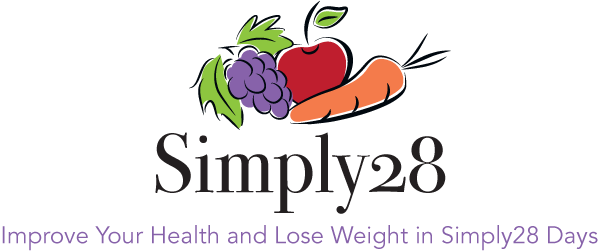As World Heart Day approaches on Sunday, September 29, 2024, it’s a perfect opportunity to reflect on the importance of heart health, especially for women. Cardiovascular disease (CVD) remains the leading cause of death globally, and while it affects both men and women, the symptoms, risk factors, and prevention strategies often differ between the sexes. Women may experience heart disease in less obvious ways, making awareness all the more vital.
Signs and Symptoms of Cardiovascular Disease in Women vs. Men
One of the most critical aspects of heart health in women is recognizing the signs and symptoms of cardiovascular disease, which can present differently compared to men. This can lead to delays in diagnosis and treatment, putting women at higher risk.
Common Symptoms of Heart Disease in Women:
- Chest Pain or Discomfort: While chest pain is still the most common symptom for both men and women, it may not feel as intense in women. Some women experience pressure or tightness rather than the “crushing” pain often described by men.
- Unusual Fatigue: Women may feel an overwhelming sense of fatigue or exhaustion, even without exertion. This can be a subtle but important indicator of heart disease.
- Shortness of Breath: This can happen suddenly and without much physical activity. It may feel like you’re struggling to catch your breath even when resting.
- Nausea, Vomiting, or Dizziness: Women may experience digestive disturbances, nausea, and lightheadedness, which are often mistaken for non-cardiac issues.
- Pain in the Back, Neck, Jaw, or Stomach: Pain may radiate to areas that aren’t immediately associated with the heart, such as the back or jaw. This differs from men, who are more likely to feel pain radiating down their left arm.
- Sweating: Cold sweats or clammy skin can signal heart trouble in women, often resembling flu-like symptoms.
In contrast, men typically report more traditional symptoms such as intense chest pain and pain that radiates down the left arm. Recognizing the subtler symptoms in women is crucial for early detection and prevention.
Risk Factors Unique to Women
While traditional risk factors like high blood pressure, high cholesterol, smoking, and obesity affect both men and women, there are certain conditions that put women at greater risk for heart disease:
- Menopause: After menopause, estrogen levels decline, increasing the risk of cardiovascular disease. Women over 55 are at higher risk.
- Pregnancy-related Complications: Conditions like gestational diabetes, preeclampsia, or high blood pressure during pregnancy can elevate the long-term risk of heart disease.
- Polycystic Ovary Syndrome (PCOS): Women with PCOS are more likely to have insulin resistance, which can lead to increased risk for heart disease.
Tips for Reducing Cardiovascular Disease in Women
- Stay Active: Aim for at least 30 to 60 minutes of moderate aerobic activity at least 5 days per week. Exercise helps maintain a healthy weight, lowers blood pressure, and improves circulation. Brisk walking, swimming, cycling, and yoga are excellent choices.
- Manage Stress: Chronic stress can contribute to heart disease by raising blood pressure and promoting unhealthy coping mechanisms like overeating. Consider stress management techniques such as mindfulness, deep breathing exercises, or journaling.
- Control Blood Sugar Levels: Since insulin resistance and diabetes are risk factors for heart disease, maintaining healthy blood sugar levels is key. A diet low in refined sugars and processed foods helps prevent blood sugar spikes.
- Quit Smoking: Smoking is a significant risk factor for heart disease. Quitting reduces your risk within a year, and the benefits continue to grow over time.
- Monitor Blood Pressure and Cholesterol: Regular checkups with your doctor can help detect high blood pressure or cholesterol early, allowing you to take action before it becomes a bigger issue.
Nutrients to Support Heart Health and Prevent Cardiovascular Disease
In addition to lifestyle changes, your diet plays a critical role in maintaining heart health. Here are some essential nutrients for women looking to prevent cardiovascular disease:
- Omega-3 Fatty Acids: Found in fatty fish like salmon, flaxseeds, and walnuts, omega-3s reduce inflammation, lower triglyceride levels, and support healthy heart function.
- Magnesium: This mineral helps regulate heart rhythm and supports blood pressure control. Foods rich in magnesium include leafy greens, nuts, seeds, and whole grains.
- Fiber: Soluble fiber, found in oats, sweet potatoes, avocado, Brussel sprouts and other cruciferous vegetables, and fruits like apples and berries, helps reduce LDL (bad) cholesterol, which can lower the risk of heart disease.
- Antioxidants (Vitamin C, Vitamin E, and Polyphenols): These nutrients combat oxidative stress, which can damage the heart and arteries. Include citrus fruits, berries, deeply colored vegetables, almonds, and dark chocolate in your diet to boost antioxidant intake.
- B Vitamins (B6, B12, and Folate): These vitamins help reduce homocysteine levels in the blood, which is linked to an increased risk of heart disease. Leafy greens, legumes, and eggs are excellent sources of B vitamins.
- Potassium: Potassium helps balance sodium levels in the body, reducing the strain on the heart. Bananas, avocados, sweet potatoes, and spinach are potassium-rich options.
Conclusion: Take Charge on World Heart Day 2024
World Heart Day 2024 is a timely reminder for both men and women to prioritize their heart health by recognizing the unique symptoms of cardiovascular disease and taking steps to reduce their risk. With a heart-healthy lifestyle, regular checkups, and a nutrient-rich diet, you can significantly lower your chances of developing heart disease. Take this opportunity to make positive changes and share this vital information with the women in your life!
Remember, prevention is the best medicine—so make your heart a priority this year and beyond.




